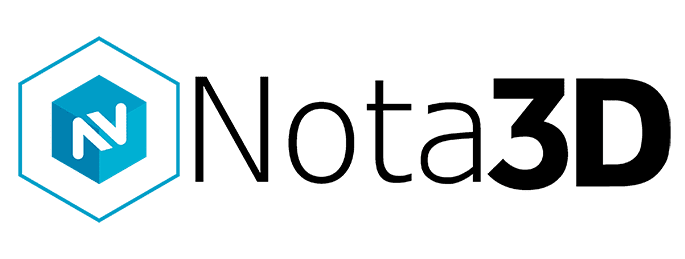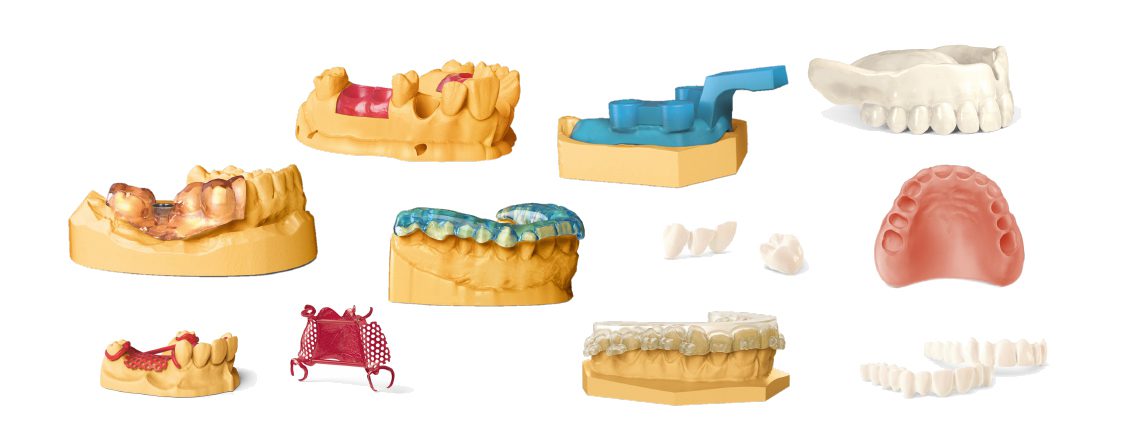Benefits and Techniques Used With Additive Manufacturing in Dentistry
3D printing, also known as additive manufacturing, has been revolutionizing various industries, and the dental industry is no exception. The utilization of 3D printing technology in dentistry has brought about significant advancements, transforming the way dental professionals approach patient care, treatment planning, and the production of dental prosthetics. It is now possible to get an accurate 3D model of the patient’s dentition, leading to 3D dental restoration, with solutions totally adapted to the patient.
Having a 3D printer in a dental practice holds immense value for dentists and their patients. It provides the dentist with greater control and flexibility over treatment planning and production processes. With a 3D printer, dentists can create accurate and customized dental models, surgical guides, and prosthetics in-house, reducing the reliance on external dental laboratories and minimizing turnaround times. This leads to improved efficiency and patient satisfaction. Additionally, the ability to produce personalized dental solutions using 3D printing technology enhances the dentist’s ability to meet individual patient needs, resulting in better-fitting restorations, increased comfort, and improved treatment outcomes. This article will examine some key ways in which 3D printing is changing the dental industry, as well as some of the techniques that are crucial to this advancement in technology.
Benefits of 3D Printing in Dentistry
Improved Precision and Accuracy
3D printing enables dental professionals to create highly precise and accurate dental models, prosthetics, and appliances. Traditional methods often involve manual labor and potential human errors. With 3D printing, digital scans can be converted into precise physical models with intricate details, resulting in better-fitting restorations and increased patient satisfaction. It is also possible to 3D print surgical devices and tools to aid in dental procedures with accuracy and precision.
Faster Turnaround Times
Traditional dental prosthetic manufacturing methods can be time-consuming and require multiple steps, involving outsourcing to dental laboratories. 3D printing allows for in-house production, reducing turnaround times significantly. Dental offices equipped with 3D printers can produce dental models, surgical guides, aligners, and crowns on-site, resulting in faster treatment planning and delivery.
Customization and Personalization
Every patient’s dental structure is unique, and 3D printing enables the creation of highly customized dental solutions. Dental professionals can design and fabricate dental prosthetics tailored to the individual needs of each patient. From aligners and dental crowns to bridges and dentures, 3D printing allows for personalized treatment options that improve comfort, functionality, and aesthetics. One of the most common applications of 3D printing in dentistry is customized crowns. It is possible to get a scan of the patient’s teeth, to model it and to directly print the crown. This process is really time-saving, and the professional can modify and reprint the crown if there is a mistake.
Enhanced Patient Communication
3D printing technology enhances patient communication and engagement. Dental professionals can use 3D-printed models to visually explain treatment plans, demonstrating the expected outcomes and involving patients in the decision-making process. This visual aid improves patient understanding, leading to better treatment acceptance and improved overall dental experience.
Cost-effectiveness
While the initial investment in 3D printing equipment and materials may seem high, the long-term benefits can outweigh the costs. In-house 3D printing reduces outsourcing expenses, eliminates shipping delays, and allows for more efficient use of resources. Additionally, the ability to create accurate dental models and prosthetics in-house can minimize the need for expensive remakes or adjustments.
Advances in Implant Dentistry
The integration of 3D printing technology has brought remarkable advances to implant dentistry, revolutionizing the entire treatment process. One significant advancement is the creation of precise and patient-specific surgical guides through 3D printing. By converting digital scans into physical guides, dentists can ensure accurate implant placement, minimizing surgical complications and optimizing outcomes. 3D printing also enables the production of customized implant components, such as abutments and frameworks, tailored to the unique anatomy of each patient. This level of customization improves the fit, functionality, and aesthetics of the final restorations. Additionally, 3D printing allows for rapid prototyping and iterative design modifications, facilitating efficient and cost-effective research and development of new implant designs and materials. Moreover, the ability to manufacture these components in-house reduces dependence on external suppliers, enhances workflow efficiency, and provides greater control over the treatment timeline.
Research and Development
3D printing has opened up new avenues for research and development in the dental field. Researchers can use 3D printing technology to create prototypes, test new materials, and explore innovative techniques. This facilitates advancements in dental materials, manufacturing processes, and treatment methodologies, leading to improved patient care and outcomes.
3D printing is transforming the dental industry by providing enhanced precision, faster production times, customization, improved patient communication, cost-effectiveness, and advancements in implant dentistry. As this technology continues to evolve, it is likely to further revolutionize dental practices, improving treatment outcomes, and reshaping the future of dental care.
3D Printing Techniques in Dentistry
In the dental industry, several 3D printing techniques can be employed to fabricate various dental components and devices. Some of the commonly used 3D printing techniques in dentistry include:
- Stereolithography (SLA) utilizes a liquid resin that solidifies when exposed to a specific wavelength of light. A UV laser selectively cures the resin layer by layer, creating a 3D object. SLA is often used to produce highly detailed dental models, surgical guides, aligners, and temporary restorations.
- Digital Light Processing (DLP) is similar to SLA but uses a digital projector to cure the resin instead of a laser. The projector displays the entire layer at once, allowing for faster printing speeds compared to SLA. DLP is commonly used for the production of dental models, surgical guides, and orthodontic appliances.
- Selective Laser Sintering (SLS) involves the use of a laser to selectively fuse powdered material, typically a biocompatible polymer, to create solid 3D objects. SLS is often employed for the production of denture bases, surgical guides, and temporary crowns.
- Fused Deposition Modeling (FDM) is one of the most widely used 3D printing techniques. It involves extruding thermoplastic filaments layer by layer to build the desired object. In dentistry, FDM is often utilized for the production of study models, orthodontic models, and surgical guides.
- PolyJet Technology uses a print head to jet and cure droplets of liquid photopolymer onto a build platform. It can produce highly detailed and accurate models by jetting multiple materials simultaneously. PolyJet technology is used in dentistry for creating dental models, wax-ups, and clear aligner templates.
- Binder Jetting is a 3D printing technique that involves depositing a binding agent onto powdered material, layer by layer, to create a solid object. In the dental field, binder jetting can be used to produce dental models, wax patterns for casting, and removable partial denture frameworks.
These 3D printing techniques offer dental professionals a range of options for fabricating dental models, surgical guides, orthodontic appliances, temporary restorations, and other dental prosthetics. The choice of technique depends on factors such as desired accuracy, speed, material properties, and the specific application within the dental workflow.
A 3D printer empowers dentists to deliver more efficient, personalized, and patient-centered care while streamlining their workflow and enhancing the overall dental experience. It provides them with greater control and autonomy over the treatment process. The ability to fabricate personalized dental solutions using a 3D printer enables dentists to cater to the unique needs of each patient.
Nota3D provides comprehensive point-of-care solutions, including software, 3D printers, and materials that seamlessly integrate into your healthcare workflow. Buying software, printers, and materials from a single source gives you peace of mind and guarantees that everything works well together.
- Patient-specific guides and models
- Segment and design models easily
- End-to-end control of the process
- Manufacture in-house
Thanks to advances in dental 3D printing technology, it’s now easier than ever to start printing parts. We specialize in helping you identify opportunities for in-house 3D printing and connecting you with the best technology and support to ensure it’s a success for you.
Nota3D offers experience you can count on. 3D Systems has leveraged its 30 years of 3D printing experience with the leading biocompatible dental 3D printing materials developer to deliver the NextDent 5100 solution. This complete solution represents industry-defining materials and print innovation, dental domain expertise, and regulatory compliance in all major markets to revolutionize your workflow. Contact us, 414-207-4404 or info@nota3d.com, today.

